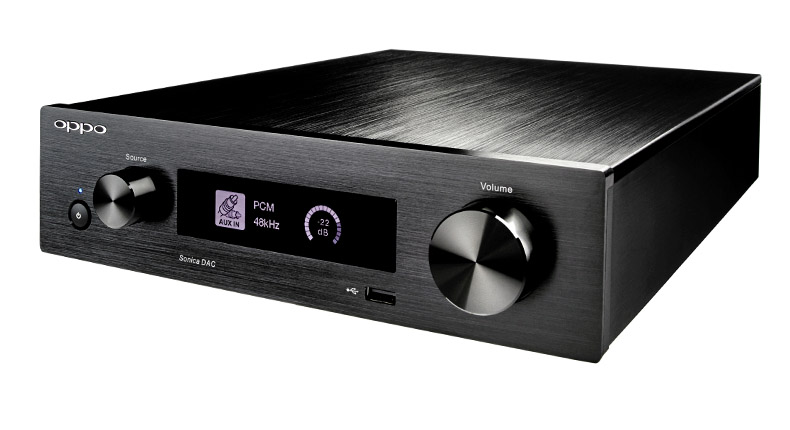What Hi-Fi? Verdict
It may be packed with top tech, but the Sonica DAC's lacklustre sound and high price don't impress
Pros
- +
Rich, weighty sound
- +
Smooth, easy-going character
- +
Excellent features and specs
- +
Solid build
- +
Good control app
Cons
- -
Lacks dynamic subtlety and overall excitement
- -
Clearer, more precise, more rhythmically adept rivals
- -
Price
Why you can trust What Hi-Fi?
Is it a DAC? Is it a streamer? Is it worth £800?
Despite its name, the Oppo Sonica DAC is much more than just a standalone digital-to-analogue converter. It’s also a high-resolution music streamer, with excellent spec support and a slick control app to boot. It even does multi-room.
There’s no denying the £800 price tag is high, though, and the Oppo Sonica DAC has its work cut out to compete against class rivals from Cambridge, Audiolab and Chord.
MORE: Best DACs 2017
Features
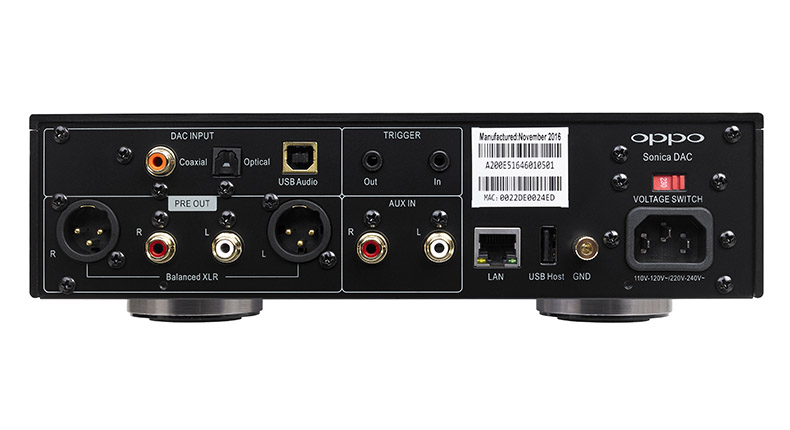
Whether you look at the Sonica as music streamer with a DAC, or a DAC with streaming features, its credentials are impressive.
Oppo uses a top-spec ESS Sabre chip boasting support for 32-bit/768kHz hi-res music files. Even in audiophile circles, that’s niche. If you do happen to have such rare hi-res tracks, you can play them using Oppo’s USB type-B connection. It also supports even-harder-to-find DSD512 tracks.
All other connections – optical, coaxial, balanced XLR and RCA stereo – offer a more standard 24-bit/192kHz file support threshold. You can also directly play hi-res files stored on USB memory sticks, including DSD64 tracks.
MORE: Hi-res audio - everything you need to know
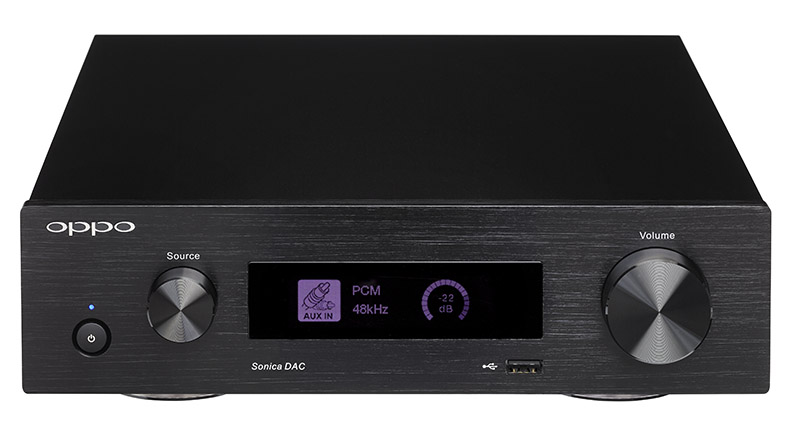
Once connected to your home network, the potential for streaming music – whether hi-res FLAC files or bog-standard MP3s – opens up.
The Oppo Sonica DAC can stream from any device connected to the same network - NAS drives, laptops, smartphones - and there’s support for streaming services such as Spotify and Tidal.
There’s no internet radio, unlike the Cambridge CXN for example, but it does have Bluetooth so you can play radio stations from your smartphone.
You can stream songs over wi-fi, but we’d opt for the more stable and reliable wired ethernet route.
The Sonica DAC can also be used as part of its own multi-room system. However, if you fancy going multi-room with Sonica wireless speakers, the streaming resolution limit drops down to 44.1kHz or 48kHz, depending on the sample size of the original.
MORE: Cambridge CXN review
Build
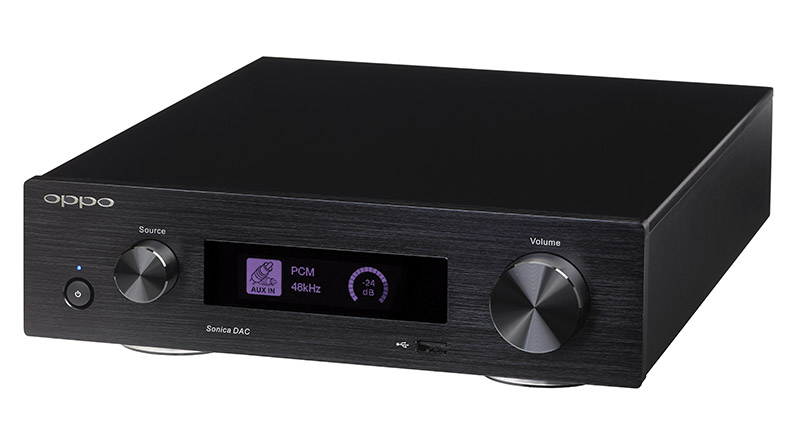
The half-width box wouldn’t look out of place in your existing hi-fi system. Its solid, aluminum-clad chassis is sturdy, practical and blends into the room rather than shouts at you with flashy design.
Controls are minimal: two rotary dials (one for navigation, one for volume) flank a 2.8in monochrome OLED display. The only other features on the front panel are the power button and USB port.
The text on the OLED screen is too small to read from afar, but that may not matter too much since you’ll be using a smartphone or tablet app for the majority of controls.
That’s right, you have to operate the DAC using the Oppo Sonica iOS or Android app - unless you pony up another £24 for the optional remote control.
MORE: What is a DAC? Everything you need to know
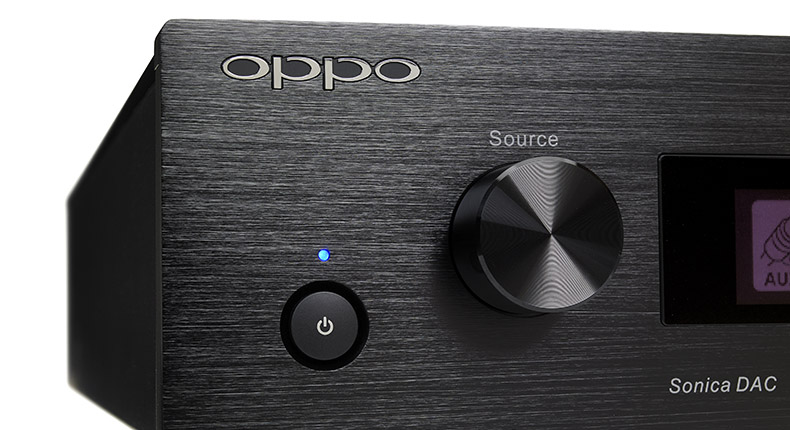
The lack of a physical remote may irk some – pressing a button to adjust volume still feels more natural than tapping at a smartphone screen – but if you’ll be streaming from a variety of sources, it makes sense to hand full control over to the app.
The Sonica DAC connects to our network swiftly, the controls work smoothly and the app’s neat, logical layout makes it a breeze to use. More importantly, there are no drop-outs during testing, and the app performs slickly even as we whizz from one source to another.
The DAC’s native menu is blissfully brief: you can adjust the screen’s brightness, access network and Bluetooth settings, and choose whether to bypass the volume control or not.
Bear in mind you’ll need to use the DAC’s physical dial to navigate through these set-up menus, as they aren’t available through the app (apart from Bluetooth pairing).
MORE: How to build the perfect hi-fi system
Sound
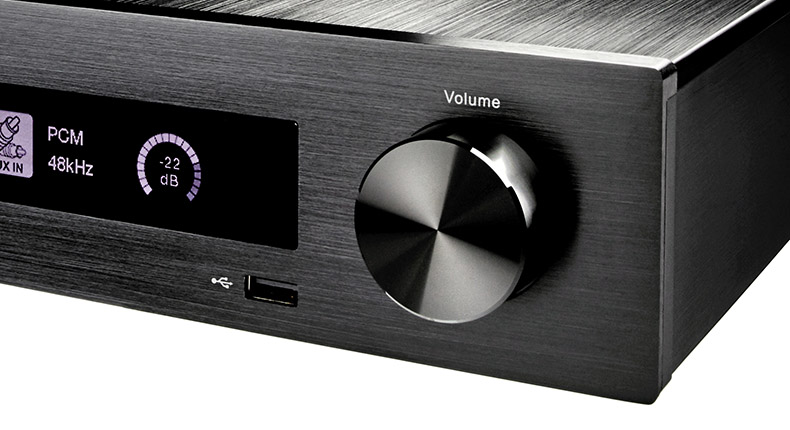
Its streaming features may offer more flexibility, but the Sonica’s real talent lies in its ability as a DAC. Sitting between our reference Naim streamer and reference Gamut amplification, the Oppo's rich and weighty sound comes to the fore.
The layered guitars on Band of Horses’ Is There a Ghost are delivered with plenty of texture and solidity. They sound chunky, while also having a layer of smoothness. The soundstage is big enough to for the indie track to roar into an arena-filling rock tune, and the guitars never harden up even when pushed.
We’d like a touch more openness though, so instruments can breathe more freely. Compared with the Cambridge CXN, the Oppo has a suggestion of restraint to its sound.
From vocals to a piano note to cello strings, the CXN opens up to deliver more space (especially at the top end), more awareness of where instruments are placed, and a whole new layer of detail. It sounds more dynamic, too.
MORE: Best hi-fi deals – CD players, amps, DACs and more
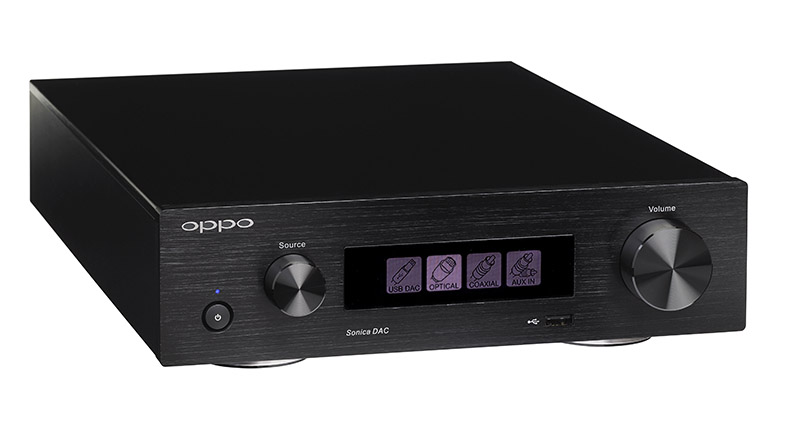
Listen to The White Stripes’ Seven Nation Army and the CXN outlines each note clearly. There’s a bounce in its step. It goes deep. The low frequencies fall a little flat through the Oppo.
The edges aren’t as precise, the rhythm isn’t snappy or fluid, and the anthemic tune loses its rousing impact as a result. Dynamically, the Oppo leaves something to be desired.
The vocals on In The Cold, Cold Night are centred and benefit from the Sonica’s smooth, rich tone. But they’re not very expressive. You can hear the approximations in Meg White’s singing clearly through the Cambridge CXN – it’s like a layer of cobwebs has been brushed away.
Stream music and the same characteristics are present. There’s a level of authority to the Sonica's rich sound, but you get the sense the Oppo isn’t having fun - which, inevitably, means it isn’t fun to listen to either.
For a good DAC without any of the streaming features, the Audiolab M-DAC (£600) or M-DAC Plus (£800) are worth considering. Push your budget a little further and the superb Chord 2Qute comes into view.
But if you’re after a music streamer that can also double up as a decent DAC, the excellent Cambridge CXN is our top choice, followed by the £500 Pioneer N-50A.
MORE: 6 albums to test your music system
Verdict
Ultimately, the rather spiritless sound coupled with the high price tag doesn’t bode well. That’s a shame, as the Oppo Sonica DAC was full of potential. Its streaming credentials tick all the right boxes, and the good quality DAC chip promised much.
But you can get far more exciting, insightful sound elsewhere, and for less money. Call it a DAC or a streamer, the Oppo’s price and dynamics leave us disappointed.
See all our Oppo reviews
What Hi-Fi?, founded in 1976, is the world's leading independent guide to buying and owning hi-fi and home entertainment products. Our comprehensive tests help you buy the very best for your money, with our advice sections giving you step-by-step information on how to get even more from your music and movies. Everything is tested by our dedicated team of in-house reviewers in our custom-built test rooms in London, Reading and Bath. Our coveted five-star rating and Awards are recognised all over the world as the ultimate seal of approval, so you can buy with absolute confidence.
